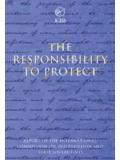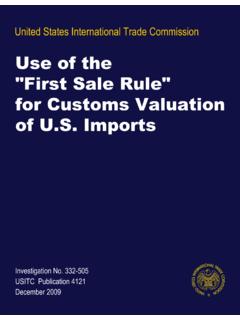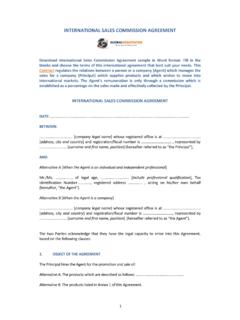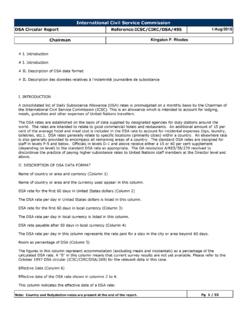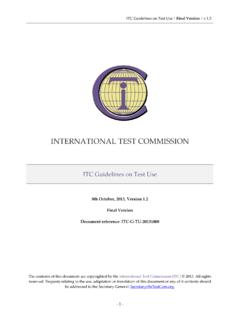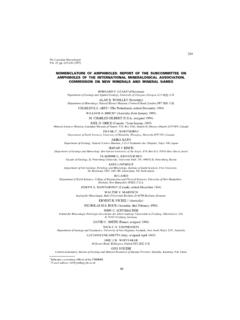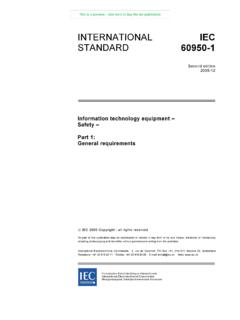Transcription of International Electrotechnical Commission (IEC) - OECD
1 1 International Electrotechnical Commission (IEC) Key features Type of organisation: Private standard-setting organisation Charter/Constitution: Report of IEC Preliminary Meeting: Membership: Nature: National committees dedicated to the Electrotechnical sector Number: 60 full members, 23 associate members, 87 affiliates Year of establishment: 1906 Headquarters: Geneva (Switzerland) Country offices: Sydney (Australia), S o Paulo (Brazil), Nairobi (Kenya), Singapore, Worcester (United States) Secretariat staff: ~120 (2017) Total budget:approx. EUR 23 million (2017) Type of activity: International Standards, Conformity Assessment Services, policy dialogue, information exchange, development of legal instruments Sectors of activity: All electrical, electronic and related technologies Webpage: Members Full members have access to all technical and managerial activities and functions, at all levels of the IEC, including voting rights in Council.
2 IEC has currently 60 full members: Algeria, Argentina, Australia, Austria, Belarus, Belgium, Brazil, Bulgaria, Canada, Chile, China, Colombia, Croatia, Czech Republic, Denmark, Egypt, Finland, France, Germany, Greece, Hungary, India, Indonesia, Iran, Iraq, Ireland, Israel, Italy, Japan, Republic of Korea, , Kuwait Luxembourg, Malaysia, Mexico, Netherlands, New Zealand, Norway, Oman, Pakistan, Philippines, Poland, Portugal, Qatar, Romania, Russian Federation, Saudi Arabia, Serbia, Singapore, Slovakia, Slovenia, South Africa, Spain, Sweden, Switzerland, Thailand, Turkey, Ukraine, United Arab Emirates, United Kingdom, United States. Associate members have full access to all working documents but limited voting rights in the technical work and no eligibility to managerial functions within the IEC.
3 IEC has currently 23 associate members: Albania, Bahrain, Bosnia and Herzegovina, Cuba, Cyprus, Democratic People s Republic of Korea, Estonia, , Georgia, Iceland, Jordan, Kazakhstan, Kenya, Latvia, Lithuania, Malta, Moldova, Montenegro, Morocco, Nigeria, Sri Lanka, The former Yugoslav Republic of Macedonia, Tunisia, Viet Nam. Relationship with non-members (affiliates) Eighty seven developing and newly industrialising countries participate in the free IEC Affiliate Country Programme ( ). The Programme gives them the opportunity to get involved with the IEC at no cost and without the burden of membership. Countries participating in the Programme benefit from 200+ free IEC International Standards for national adoption. They receive support to become more aware of the benefits of using International Standards and verifying conformity.
4 Affiliates learn how to monitor relevant working documents, taking a step to step approach to establishing an IEC National Electrotechnical Committee (NEC). NECs aim to bring together relevant public and private sector participants. Participants also receive training, mentoring and support to participate in the IEC Conformity Assessment activities. Observers To co-ordinate its technical work, the IEC has hundreds of liaisons with many organisations ( ). In order to be effective, liaison operates in both directions, with suitable reciprocal arrangements. Mandate The mission of the IEC is to be globally recognised as the leading provider of Standards, conformity assessment systems and related services needed to facilitate International trade and enhance user value in the fields of electricity, electronics and associated technologies.
5 2 IRC processes taking place within the International Electrotechnical Commission Categories of legal and policy instruments Is it taking place within the IO? Approximate number Treaties for ratification by States (excluding the funding one) Legally binding decisions (Decisions) Recommendations ~100 Political declarations Model treaties or law Production of technical standards > 9 000 Non-binding guidance/best practices document Many different categories of documents Interactions with other International organisations active in the field Mechanisms of interaction Approximate number of IOs involved Examples Develop joint instruments 20 The IEC co-operates with several International and regional bodies with the aim of encouraging implementation of its International Standards and to reduce work overlaps.
6 Examples include: UNECE, ISO, ITU, IEA, CIGRE, OIML, UIC, CIRM, IAEA, ILAC, IAF, ICRP, IMDRF, IMO, , IOGP, ISSA, UITP, WTO/OMC, WHO MoU or other agreements 190 Participate in co-ordinating institution 190 Joint meetings that provide forum for co-ordination 10 Observe relevant actions of other bodies 190 Exchange information 190 IEC history The IEC was officially founded in June 1906, in London, England. By 1914 the IEC had formed four technical committees to deal with Nomenclature, Symbols, Rating of Electrical Machinery, and Prime Movers. In 1948, the IEC Central Office moved to Geneva, Switzerland. Throughout the following decades the IEC built up a global platform on which thousands of experts helped develop the technical foundation for the majority of electrical and electronic technologies that generate or use electricity.
7 Those include for example, lamps and lighting, fibre optics, medical devices, electric vehicle charging, solar, wind and marine energy systems, energy storage, semiconductors, the universal charger for mobile phones, and much, much more. Today, IEC work contributes essentially to universal energy access, smart electrification, smarter more sustainable cities, all forms of transportation, smart manufacturing, and more. Billions of devices and components rely on IEC International Standards and the IEC Conformity Assessment Systems to work safely, with each other, everywhere in the world. Source: Updated from OECD (2016), International Regulatory Co-operation: The Role of International Organisations in Fostering Better Rules of Globalisation, OECD Publishing, Paris. Systematically Frequently Frequently Occasionally Never Never Never Never Never Exchange of information and experiencesData CollectionResearch and policy analysisDiscussion of good regulatory practicesDevelopment of rules, standards or good practicesNegotiation of International agreementsEnforcement: imposition of sanctionsDispute settlementCrisis management










